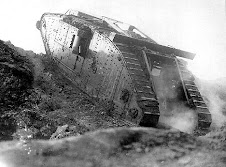September 21, 2021
September 21, 2020
November 18, 2019
November 03, 2019
October 28, 2019
October 11, 2019
October 06, 2019
September 27, 2019
September 26, 2019
September 19, 2019
November 25, 2018
November 19, 2018
November 04, 2018
October 22, 2018
October 14, 2018
September 28, 2018
November 03, 2017
THE STORY OF EARTH
Here you can watch a very interesting documentary about how was formed our blue planet and its evolution through the time. Enjoy and don´t forget to activate subtitles!!
September 20, 2017
September 18, 2017
NEW SCHOOL YEAR. WELCOME BACK!!!
a new school year has started, please fasten yor seat belts and prepare for a thrilling experience....and don´t forget to enjoy!
February 21, 2017
SING-A-LONG WITH HISTORY
Here I present you a new, different way to review contents using some of the most famous songs versions. In this case you can watch historical reviews from units 9 to 11.
Do you like Karaoke?........sing, learn, remember and enjoy!!
MESOPOTAMIA:
EGYPT:
ANCIENT GREECE
ROME
Do you like Karaoke?........sing, learn, remember and enjoy!!
MESOPOTAMIA:
EGYPT:
ANCIENT GREECE
ROME
February 12, 2017
February 08, 2017
Cities through time: Evolution of urbanism
Let´s check the evolution of urbanism in three cities of Castilla and León. In this case we will compare the evolution between 1956 (american flight) and 2015 (satellite imagery). Click on the names to see the maps
- SEGOVIA
- BURGOS
February 06, 2017
Mummy maker. A review game about egyptian mummification
Mummy Maker is a BBC´s interactive game to review the Egyptian Mummification Process. Follow the instructions carefully, choose wisely and Ramose will get the eternal life. To play, PRESS HERE
October 12, 2016
January 21, 2016
Earliest testimony of war in Human history: the massacre of Nataruk
A chilling prehistoric ‘war grave’ containing
the smashed remains of hunter-gatherers is the first evidence of a human
massacre and demonstrates the terrifying aggression of early man.The fossilised bones of a group of 27 hunter-gatherers, who were murdered 10,000 years ago, was discovered at Nataruk near Lake Turkana in Kenya.Four victims, including one heavily pregnant woman were bound by the
hands and feet before they was slaughtered. The others showed signs of
extreme violence and some had blades and arrows still buried in their
skulls.
The origins of human aggression are controversial, with many
archaeologists believing that hunter-gatherers were largely peaceful,
and did not resort to warfare until after the agricultural revolution,
when groups grew jealous of the land and possessions of their rivals.
Before the find, the earliest war grave was in Darmstadt, Germany, and dated to around 5000BC.
But the new site suggests that early man was also capable of acts of
extreme violence. Researchers believe the Nataruk massacre is the
earliest scientifically-dated historical evidence of human conflict.
Study author Professor Robert Foley, also from Cambridge’s Leverhulme Centre for Human Evolutionary Studies
said the findings show that violence is as much part of the human
character as the altruism which allowed us to be the most cooperative
species on the planet.“I’ve no doubt it is in our biology to be aggressive and lethal, just as it is to be deeply caring and loving,” he said.“A lot of what we understand about human evolutionary biology suggests these are two sides of the same coin.” The 27 skeletons included at least eight women and six children.
Twelve of the skeletons were relatively complete, and showed clear signs
of a violent death, including smashed skulls and cheekbones, broken
hands, ribs and knees and evidence of arrow wounds to their necks.
Arrow
tips were lodged in the skull and chest of two men.Several of the skeletons were found face down with the faces smashed, possibly by wooden clubs, and none had been buried.“The deaths at Nataruk are testimony to the antiquity of inter-group
violence and war,” said lead author Dr Marta Mirazón Lahr. “These human remains record the intentional killing of a small band of
foragers with no deliberate burial, and provide unique evidence that
warfare was part of the repertoire of inter-group relations among some
prehistoric hunter-gatherers.”
Archaeologists believe the
victims represent an extended family who were attacked and killed by a
rival group of prehistoric foragers. The massacre is likely to have occurred between 9,500 to 10,500 years
ago, around the start of the Holocene: the geological epoch that
followed the last Ice Age.At that time the area around Nataruk
was a fertile lakeshore bordered by marshland and forest giving
covetable access to drinking water and fish.
“The Nataruk
massacre may have resulted from an attempt to seize resources –
territory, women, children, food stored in pots – whose value was
similar to those of later food-producing agricultural societies, among
whom violent attacks on settlements became part of life,” added Mirazón
Lahr.“This would extend the history of the same underlying
socio-economic conditions that characterise other instances of early
warfare: a more settled, materially richer way of life. “. Antagonism between hunter-gatherer groups in recent history often
resulted in men being killed, with women and children subsumed into the
victorious group. At Nataruk, however, it seems few, if any, were
spared. The remains of a six-to-nine month-old foetus were recovered from within the abdominal cavity of one of the women.
One adult male skeleton had an obsidian ‘bladelet’ still embedded in
his skull. It didn’t perforate the bone, but another lesion suggests a
second weapon did, crushing the entire right-front part of the head and
face.“The man appears to have been hit in the head by at least
two projectiles and in the knees by a blunt instrument, falling face
down into the lagoon’s shallow water,” said Mirazón Lahr. Another adult male took two blows to the head – one above the right eye,
the other on the left side of the skull – both crushing his skull at
the point of impact, causing it to crack in different directions.
The research was published in Nature
Infornation and photo extracted from The Telegraph online version
http://www.telegraph.co.uk/news/earth/environment/archaeology/12111005/Prehistoric-war-grave-reveals-bodies-from-first-ever-human-massacre.html
Subscribe to:
Comments (Atom)













